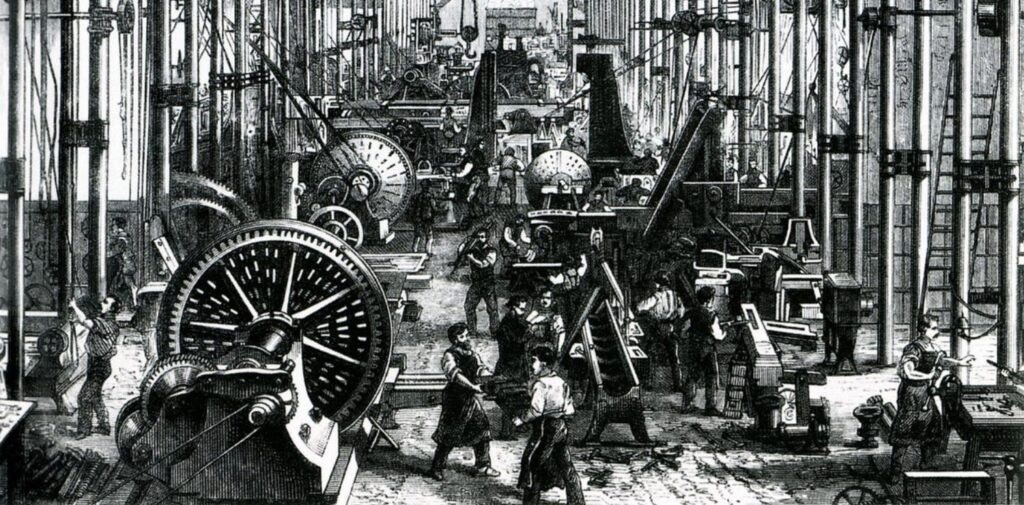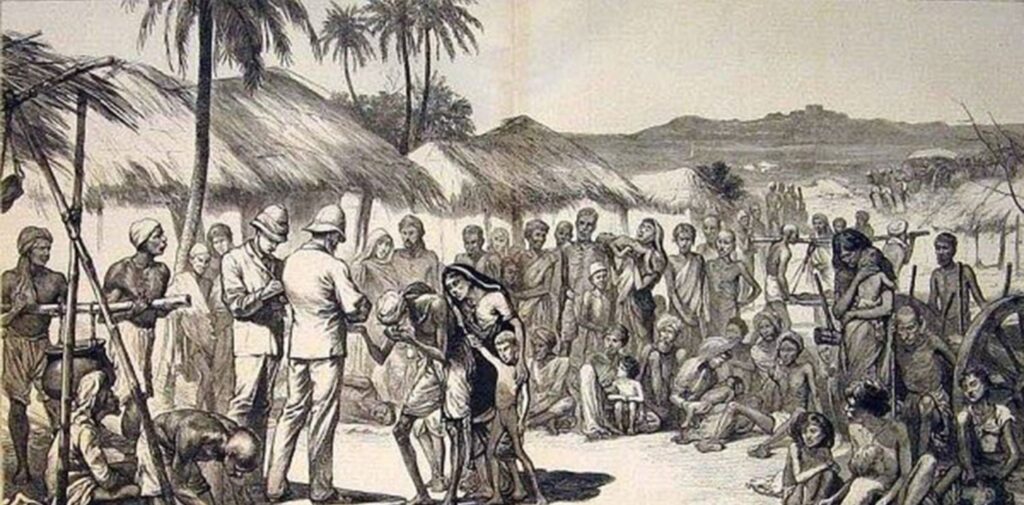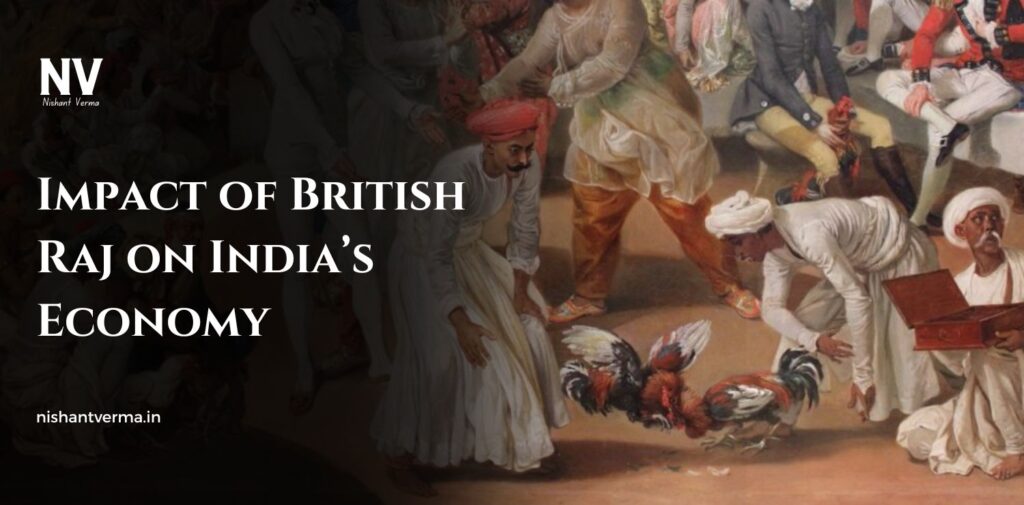The British Raj, which lasted from 1858 to 1947, significantly impacted India’s economy in both positive and negative ways. While India witnessed some development during British rule, the overall effect of British policies was detrimental to India’s economic growth. The colonial rulers primarily aimed to benefit Britain, often at the expense of India’s resources, industries, and people.
1. Economic Drain and Resource Exploitation
One of the most significant negative impacts of British rule on Indias economy was the concept of the “economic drain.” The British extracted immense wealth from India, sending it back to Britain. The colonial government used Indian resources and labor to fuel Britain’s industrial revolution. For example, raw materials like cotton, jute, and spices were exported from India to Britain at cheap prices, while India had to pay high prices for finished goods from Britain.
India was not allowed to develop its own industries, and instead, the British used India primarily as a source of raw materials. The economic drain led to widespread poverty and a lack of infrastructure in India, as much of the revenue generated by India was diverted to benefit Britain.

2. Destruction of Indian Handicrafts and Industries
Under British rule, Indian industries and traditional handicrafts faced severe decline. The British implemented policies that favored British manufactured goods over Indian products. For instance, British textile imports flooded the Indian market, which led to the collapse of India’s once-thriving textile industry. The Indian handloom weavers, who produced some of the finest fabrics in the world, were severely impacted as British machine-made textiles were cheaper and flooded the market.
The destruction of indigenous industries led to a loss of livelihoods for millions of people, particularly artisans, craftsmen, and workers. India was transformed into a market for British goods, and its own industries were systematically dismantled to prevent competition with British products.
3. Agricultural Policies and Famines
Agriculture was the backbone of India’s economy, with most of the population relying on farming. However, the British Raj had a negative impact on Indian agriculture. British policies focused on maximizing revenue collection from land taxes, which led to heavy taxation on Indian farmers. To collect taxes, the British often implemented exploitative practices, like the Zamindari system, where landlords were given control over land and its tenants. These landlords, often working in alliance with the British, extracted high rents from poor farmers, causing them to fall into debt.
The British also forced Indian farmers to grow cash crops like cotton, indigo, and opium for export to Britain, instead of food crops. This led to food shortages and, in many cases, famines. Between 1876 and 1947, India experienced several major famines, and millions of people died due to hunger and malnutrition. The British government, instead of providing relief, prioritized exports and failed to provide the necessary support during these crises.
4. Development of Railways and Infrastructure
Although the British Raj had many negative effects on India’s economy, one positive impact was the development of infrastructure, particularly the railway system. The British built a vast network of railways to transport raw materials from the interior of India to ports for export to Britain. While the primary purpose was to serve British economic interests, the railways also provided India with a modern transportation network that connected different regions of the country.
The railway system, which was one of the largest in the world by the end of British rule, facilitated the movement of people and goods across the country. This infrastructure helped integrate the Indian economy to some extent, allowed for the expansion of markets, and played a role in India’s future industrial development after independence. However, the railways were built with an emphasis on serving British economic interests and did not prioritize local needs.

5. Impact on Indian Trade and Industry
The British also had a significant impact on India’s trade. Before the British arrived, India was a major trading hub, with flourishing exports of textiles, spices, and other goods. Under British rule, India’s trade was redirected to serve Britain’s economic needs. British policies hindered India’s ability to trade freely with other countries and limited India’s industrial capacity.
In the post-colonial period, India had to rebuild its industries and trade networks. The British monopoly on trade left India with limited manufacturing capacity and outdated industries. Many of India’s traditional industries, such as textiles and handicrafts, were nearly wiped out. Moreover, the British also imposed high tariffs on Indian goods, making it difficult for India to export products to other countries.
6. Investment in Education and Human Capital
Under British rule, education in India was primarily aimed at creating a small group of educated Indians who could serve in the colonial administration. The British introduced a western-style education system, but it was limited to a small section of the population. Most of the rural population remained illiterate, and there was no significant investment in developing skilled labor for industries.
While the British did invest in education, it was not to promote economic development for the majority of Indians. The educated class that emerged under British rule was often disconnected from the agricultural and industrial realities of India, which contributed to the country’s underdevelopment. However, this education system also gave rise to a new class of Indian intellectuals who would later play a significant role in India’s struggle for independence and economic reforms.

7. The Emergence of a Dependent Economy
Overall, the British Raj led to the creation of a dependent economy in India. India’s economic structure was molded to serve the interests of Britain, and as a result, India was unable to develop its own industries or economy independently. The British monopolized key sectors, controlled trade, and extracted wealth without reinvesting it in India. This left India economically backward, with widespread poverty, underdevelopment, and a lack of infrastructure and industrial growth.
By the time India gained independence in 1947, the country’s economy was severely underdeveloped. It was primarily agrarian, with little industrial growth and minimal investment in key sectors like education, healthcare, and infrastructure.
Conclusion: The British Raj
The British Raj left a profound impact on India’s economy. While there were some infrastructural developments like railways, the overall impact was largely negative. India’s resources were exploited for the benefit of Britain, while its industries were dismantled and agriculture was left in a state of stagnation. The economic drain, destruction of local industries, famines, and exploitative land policies significantly hindered India’s economic growth and development during British rule.
India’s economy was shaped by British policies that prioritized colonial interests over the welfare of the Indian people. Although the effects of British colonialism are still felt today, India has made significant strides in rebuilding its economy post-independence. However, understanding the historical impact of British rule on India’s economy is crucial for understanding the challenges India faced in its journey toward economic development.




